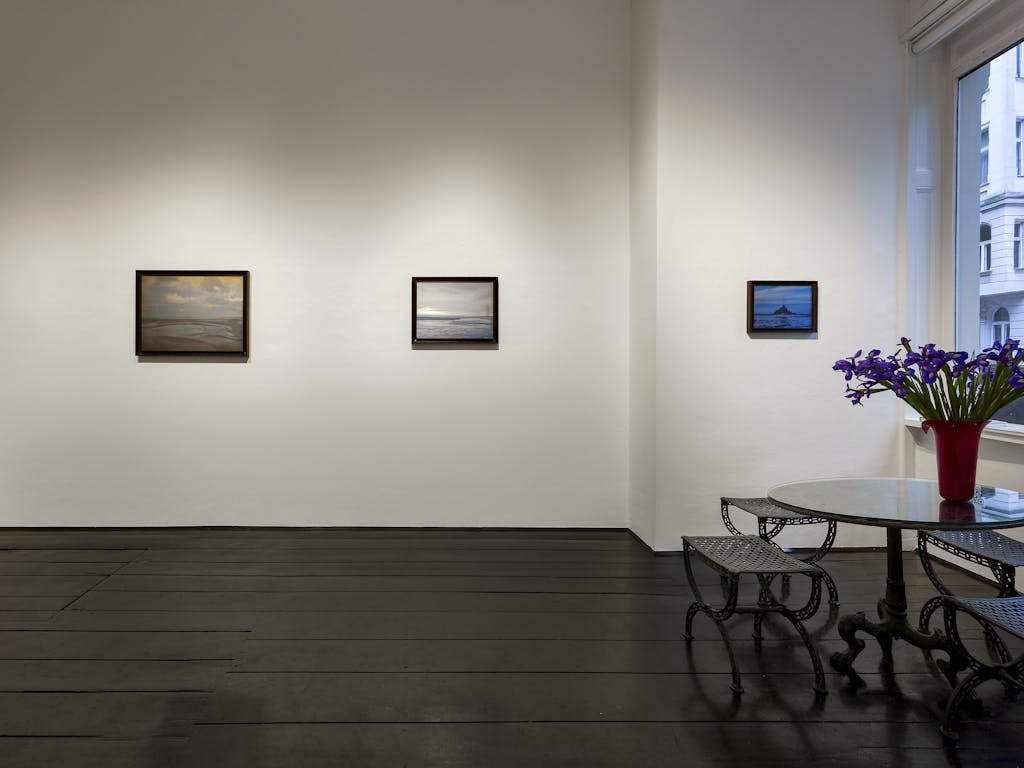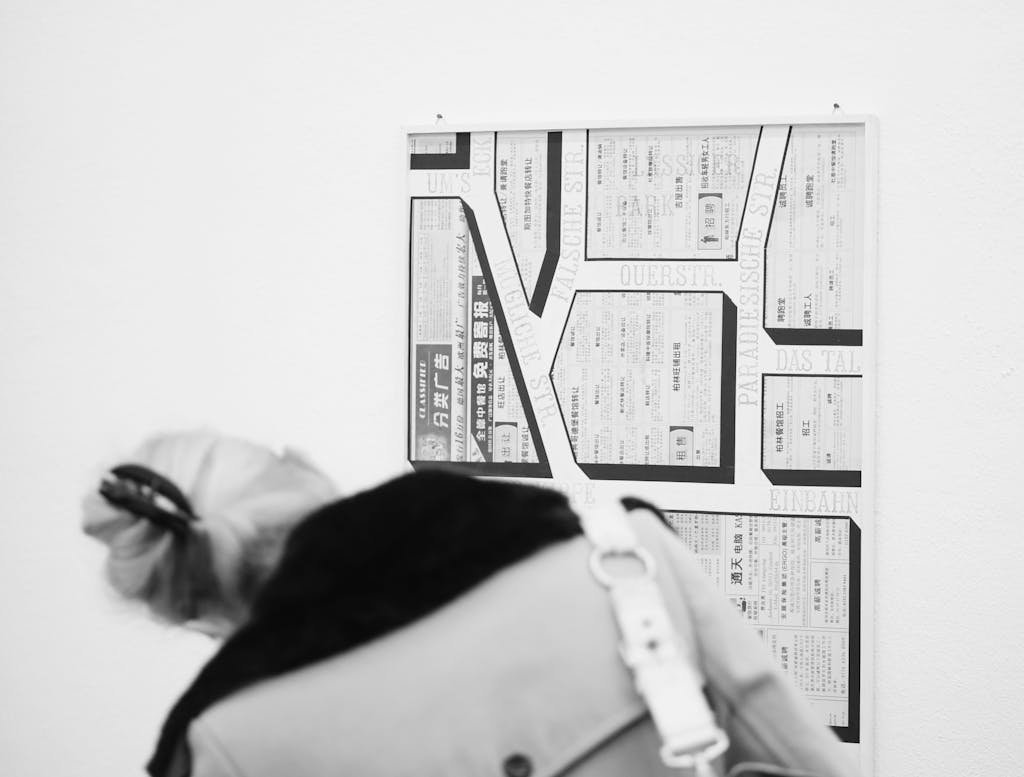Aestus, the Latin title of the exhibition, serves to designate the tides. Esser thus shows more than idealised landscapes: he depicts the silent natural forces of ebb and flow, which, determined by the effects of the moon, the coasts and the winds, expose and conceal the Normandy mudflats in a perpetual cycle. The height of the wide horizon in the picture places the focus on the water and its forces, the surf, the current, the whirlpools, or on the clouds. All this is pierced and accompanied by the light of dawn or day, sometimes glaring, sometimes diffuse.
These new works fit into Esser’s oeuvre, which, with seascapes, landscapes and vedute, moves within genres that are unusual for an artist of the Düsseldorf ‘Becher School’. Looking at his pictures, one might feel taken back to the 19th century, to the beginnings of photography. Esser’s preoccupation with the history of art and photography becomes apparent when looking at the composition. In particular, the seascapes with their depiction of impressive cloud formations are reminiscent of photographs by Gustave Le Gray (1820–1884).
So much of Esser’s work seems familiar to our pictorial memory, the framing of the picture, for example, or ‘repoussoirs’ in the foreground. Esser uses large-format cameras for the photographs and largely analogue processes in the further processes. For the pictures shown here, he exposed silver-plated copper plates, an experimental development in light-image design that gives both the depth in the picture and the glow of the light an almost painterly expression.
Not least the images of the dark, fairytale-like architecture of the abbey seem to have fallen out of time, since the mountain church has remained unchanged for centuries. Esser’s pictures do not show the ephemeral. He chooses his motifs without any obvious reference to the present, thus leaving the viewer with a multitude of possible references from literature, painting or cultural history. With his pictures, Esser raises awareness of the moment and its uniqueness, whether it lasts a while or only briefly.
Elger Esser leads the viewer to a subjective experience of time, and for this he does not stage. He works with what he sees, with the landscape and the temperament of nature. Esser’s pictorial ideas reveal themselves through the materiality of his works, through the surface, the shine and the depth, the colour and all its oscillations. His paintings open up views of powerful but quiet harmony and beauty; – they open up the view of the seascapes of Normandy, but more so to our pictorial sensibility and to the moment and time.
Elger Esser was born in Stuttgart in 1967. He was a master student of Bernd Becher at Kunstakademie Düsseldorf. He has been honoured with numerous exhibitions and is represented in important collections, including: Kunsthalle Karlsruhe; Kunstmuseum Stuttgart; Centre Pompidou, Paris; Rijksmuseum and Stedelijk Museum, Amsterdam; Museum der Moderne, Salzburg; Albertina and Museum Moderner Kunst, Vienna; Kunsthaus Zürich; Museum of Modern Art and Guggenheim Museum, New York; Museo Jumex, Mexico City. Esser was awarded the Rheinischer Kunstpreis in 2010 and the Oskar Schlemmer Prize in 2016. Esser lives in Düsseldorf.

